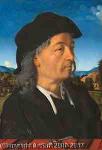Giuliano Da Sangallo
Giuliano Da Sangallo
Mjesto: Florence
Rođen: 1443
Smrt: 1516
Biografija:
Giuliano da Sangallo was an Italian sculptor, architect and military engineer active during the Italian Renaissance. He is known primarily for being the favored architect of Lorenzo de' Medici, his patron. In this role, Giuliano designed a villa for Lorenzo as well as a monastery for Augustinians and a church where a miracle was said to have taken place. Additionally, Giuliano was commissioned to build multiple structures for Pope Julius II and Pope Leo X. Leon Battista Alberti and Filippo Brunelleschi heavily influenced Sangallo and in turn, he influenced other important Renaissance figures such as Raphael, Leonardo da Vinci, his brother Antonio da Sangallo the Elder, and his sons, Antonio da Sangallo the Younger and Francesco da Sangallo.
Giuliano da Sangallo (née Giuliano Giamberti) was born c. 1445 in Florence. His father, Francesco Giamberti, was a woodworker and an architect who worked closely with Cosimo de' Medici. This proved to be helpful to Giuliano and his brother, Antonio, later in life as it helped them to develop a close working relationship and friendship with Cosimo's grandson, Lorenzo de' Medici. As a child, Giuliano became an apprentice to a joiner. As an apprentice, his woodworking, building and sculpting skills drew the attention of Lorenzo de' Medici. In addition to his work as a joiner's apprentice, Giuliano had the opportunity to study the works of ancient architects such as Pliny the Younger and Vitruvius as well as his more immediate predecessors such as Leonardo Battista Alberti and Filippo Brunelleschi. Through this, he was able to develop his creative eye, learn about classical design, and also develop what became a lifelong business relationship with Lorenzo de' Medici. Giuliano's first major, independent commission came from none other than the Medici family and it showed not only his architectural skill, but also his knowledge of defensive fortifications. Lorenzo the Magnificent called upon Giuliano to build military fortifications and manage the artillery in the town of Castellina against an invasion led by the Duke of Calabria. In this role, Giuliano successfully pushed out the Calabrian forces and showed his natural talent for military building and strategy.
The victory at Calabria gave Lorenzo de' Medici confidence to keep working with Giuliano. Consequently, Lorenzo commissioned him to design a villa in Poggio a Caiano after holding a competition to determine the best design. Giuliano was able to use Leon Battista Alberti's design for the Villa Medici in Fiesole as his initial inspiration. Construction on the villa began in 1485 and remained largely unfinished throughout Lorenzo's life. His son, Giovanni, oversaw its completion after being elected pope as Pope Leo X. Giuliano's design featured classical design elements including Ionic columns and an ancient temple style façade. The Medici Villa in Poggia a Caiano is one of the oldest examples of Renaissance-style country villas and served as an inspiration for many future architects of the era.
In 1484, a child from the town of Prato claimed to have seen a painting of the Virgin Mary and an infant Jesus come to life on the side of the public jail. Santa Maria delle Carceri was commissioned after the townspeople declared this a miracle and decided that a church should be built at the site of the vision to commemorate it. For this project, Lorenzo de' Medici once again hired his favorite architect, Giuliano. His designs relied heavily on his study of the work of Alberti and Brunelleschi. Specifically, Sangallo used a Greek cross plan. This is a classical layout design that features four arms of equal length extending off of a central nave and it had not been used extensively in the Renaissance before that point. Construction began on the church in 1486, but the façade remains unfinished to this day.
In 1488, after the initial plans were set for the villa in Poggia a Caiano, Lorenzo de' Medici commissioned Giuliano to build a castle for Ferrante of Aragon, the King of Naples. The building of the castle was part of a larger political plan that the leaders of the different city-states of Renaissance Italy engaged in. When city-states were not warring with each other, they would send gifts as well as painters, sculptors, and architects to each other as diplomatic displays of good faith. Additionally, by sending Giuliano to Naples, the Medici family was attempting to export Florentine culture and architecture across the Italian Peninsula. Giuliano sought to build the castle near the open land by Castel Nuovo. Unfortunately, the castle was never built, but his sketches of the plan still remain. The palace design featured elements similar to that of Giuliano's first major commission, the Medici Villa. Similar elements between the Medici Villa and the castle in Naples include the raised platform on which the structures were built, two stairways leading to the main entrance, and a portico between the two stairways. Furthermore, both structures were built on a rectangular, symmetrical axis. After Giuliano completed his service for the king, he was sent back to Florence with gifts including money, paintings, and sculptures. Giuliano gave many of these gifts to Lorenzo de' Medici as a showing of appreciation for being his patron.
More...
Wikipedia link: Click Here










